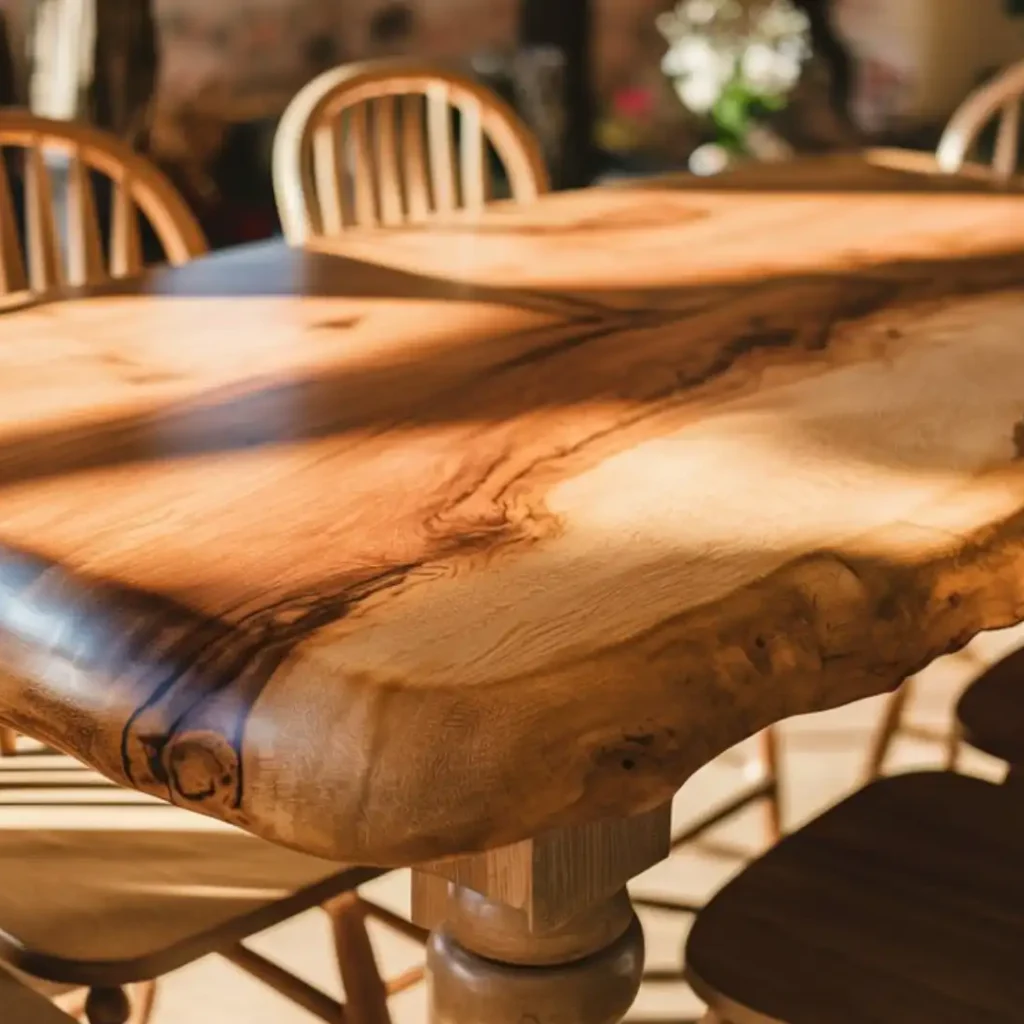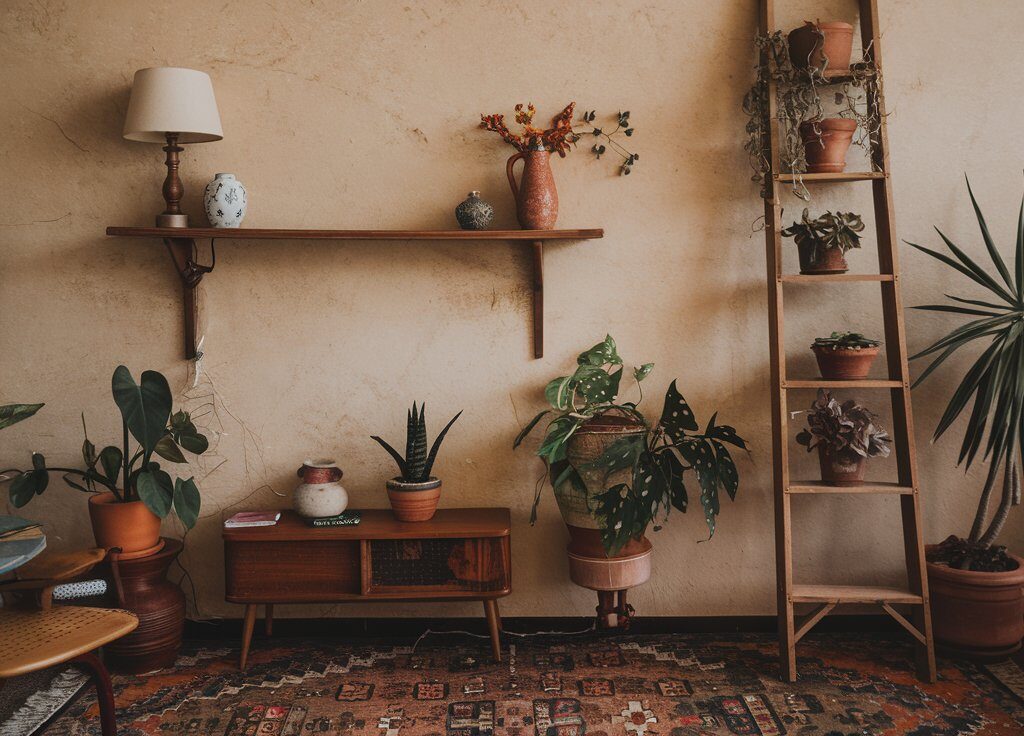- Why Wood Matters
- Best Wood for Table Top
- Customizing Your Table Top
- Durability Considerations
- Environmental Impact of Wood Choices
- Best Finishes for Wooden Table Tops
- Cost Considerations
- Maintenance and Care Tips
- Matching Wood to Your Home’s Style
- Choosing the Right Wood for Different Table Types
- Conclusion
- FAQs
The best wood for table top isn’t just about looks, it plays a pivotal role in the longevity and functionality of your furniture. Whether you’re crafting a rustic farmhouse dining table or a sleek, modern coffee table, the wood you select determines its resilience to wear and tear, its ability to age gracefully, and how well it complements your interior. Finding the right wood involves balancing aesthetics with durability, budget, and environmental impact. This guide will walk you through the best wood options available, helping you make an informed decision.
Why Wood Matters
Wood brings warmth and character to any table, making it a favored material for furniture. However, not all woods are created equal. Some are soft and prone to scratches, while others are dense and resistant to damage. Wood also reacts to environmental factors like humidity and temperature, which can affect its lifespan. Selecting the best wood for table top ensures your table remains sturdy, scratch-free, and visually appealing over time. Wood grain patterns, colors, and hardness levels are also important in achieving the look and feel you desire.
Best Wood for Table Top

There are numerous woods to consider when choosing the best wood for table top, each offering unique characteristics. Hardwood options like oak, walnut, and cherry are highly sought after for their durability and rich textures, while reclaimed wood offers an eco-friendly and rustic option. Softer woods like pine may not be as durable but bring a lighter, more casual aesthetic. Each wood type has its pros and cons, and understanding them helps you align your choice with your functional and stylistic needs.
Solid Wood vs. Engineered Wood
When deciding on the best wood for table top, you’ll encounter two main types: solid wood and engineered wood. Solid wood is cut from a single piece of timber and showcases the natural grain, adding authenticity and uniqueness to your table. Engineered wood, on the other hand, is made from layers of wood bound together, often with a veneer on top. While engineered wood is typically more affordable and resistant to warping, solid wood offers superior durability, especially for heavy-use tables. Your choice will depend on your budget and how you plan to use the table.
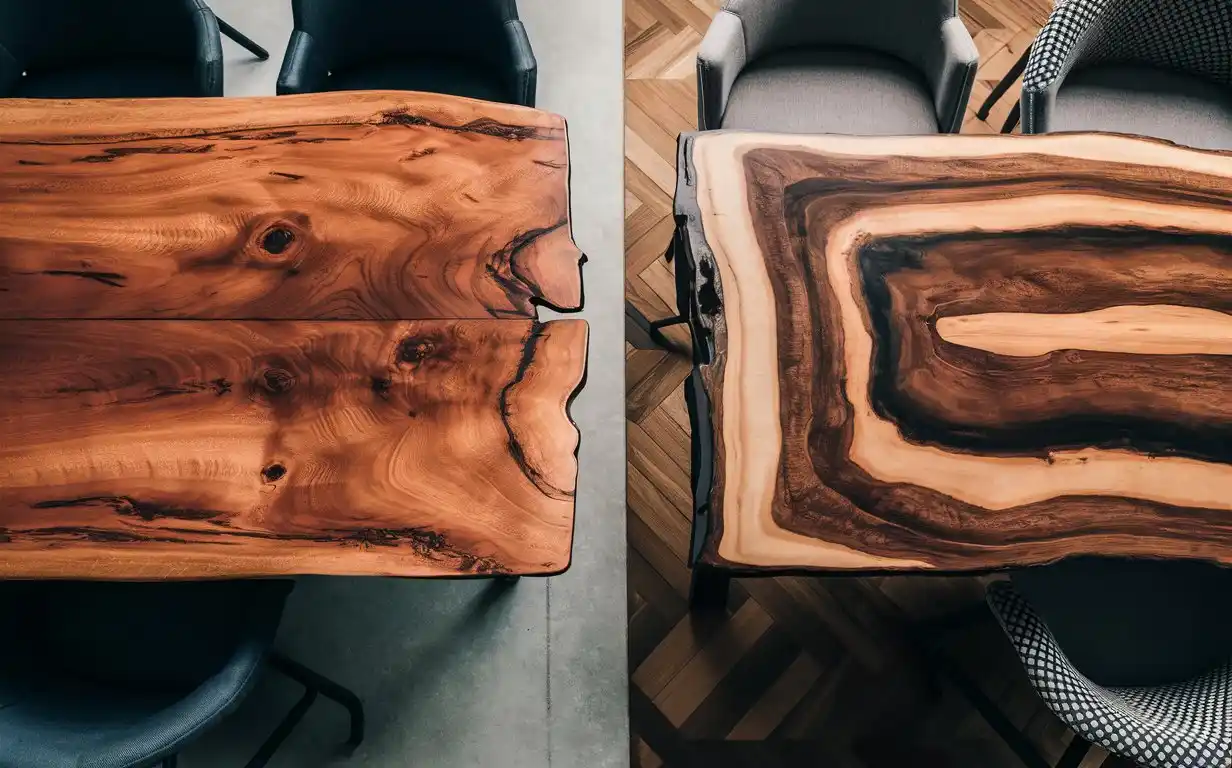
Hardwood vs. Softwood
Hardwood and softwood differ not only in their physical properties but also in how they contribute to the look and feel of your table. Hardwoods, such as oak, walnut, and cherry, come from broad-leaved trees and are known for their toughness and density. They’re the best wood for table tops that see daily use, such as dining tables. Softwoods like pine come from coniferous trees and are lighter and less durable. While softwood may work well for decorative or occasional-use tables, hardwood is typically the go-to for a more lasting, functional piece.
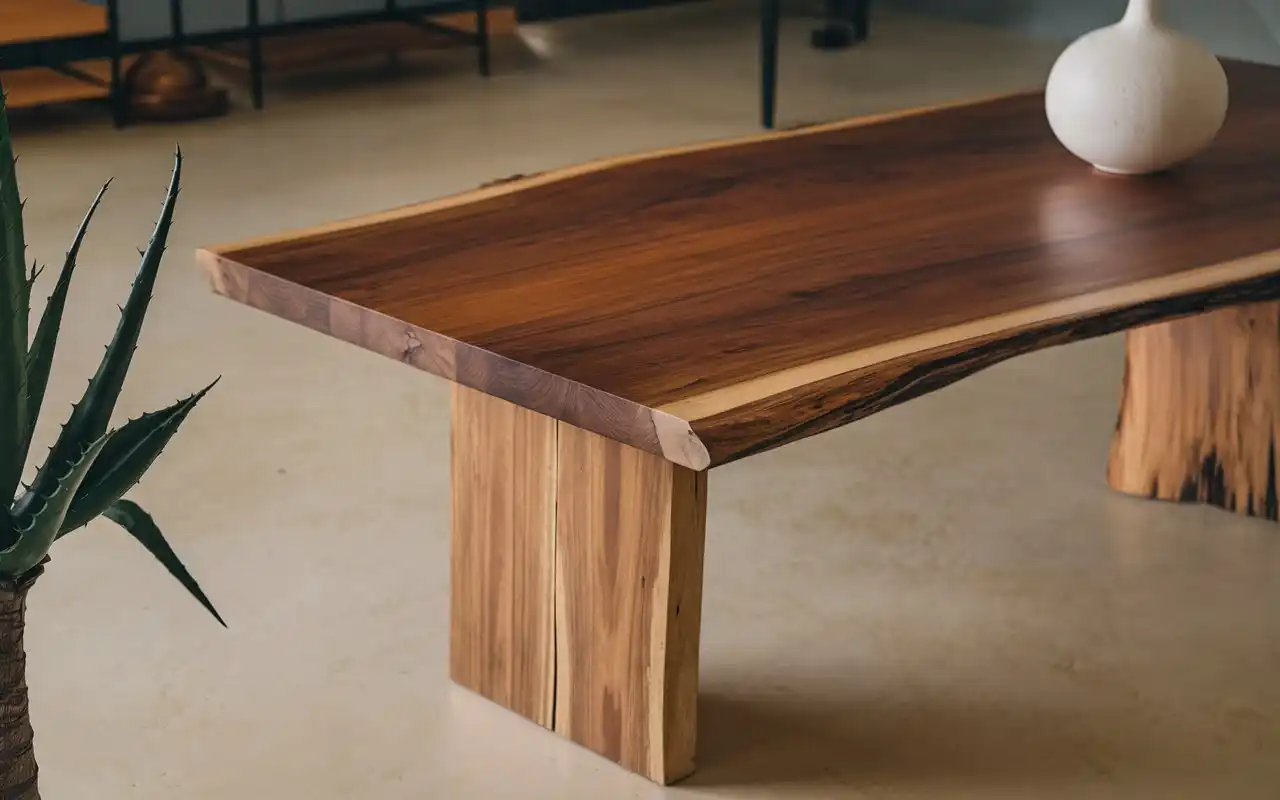
Oak
Oak is renowned for its durability, natural grain, and resistance to wear, making it one of the best wood options for table tops. Its hardness makes it ideal for heavy-use surfaces, such as dining or office tables. Oak also offers a variety of finishes, from light to dark, ensuring it fits both traditional and contemporary interiors. Its dense grain resists scratching and denting, ensuring your table stays beautiful even after years of use. Additionally, oak’s timeless appeal makes it a long-term investment for homeowners looking for both practicality and style.
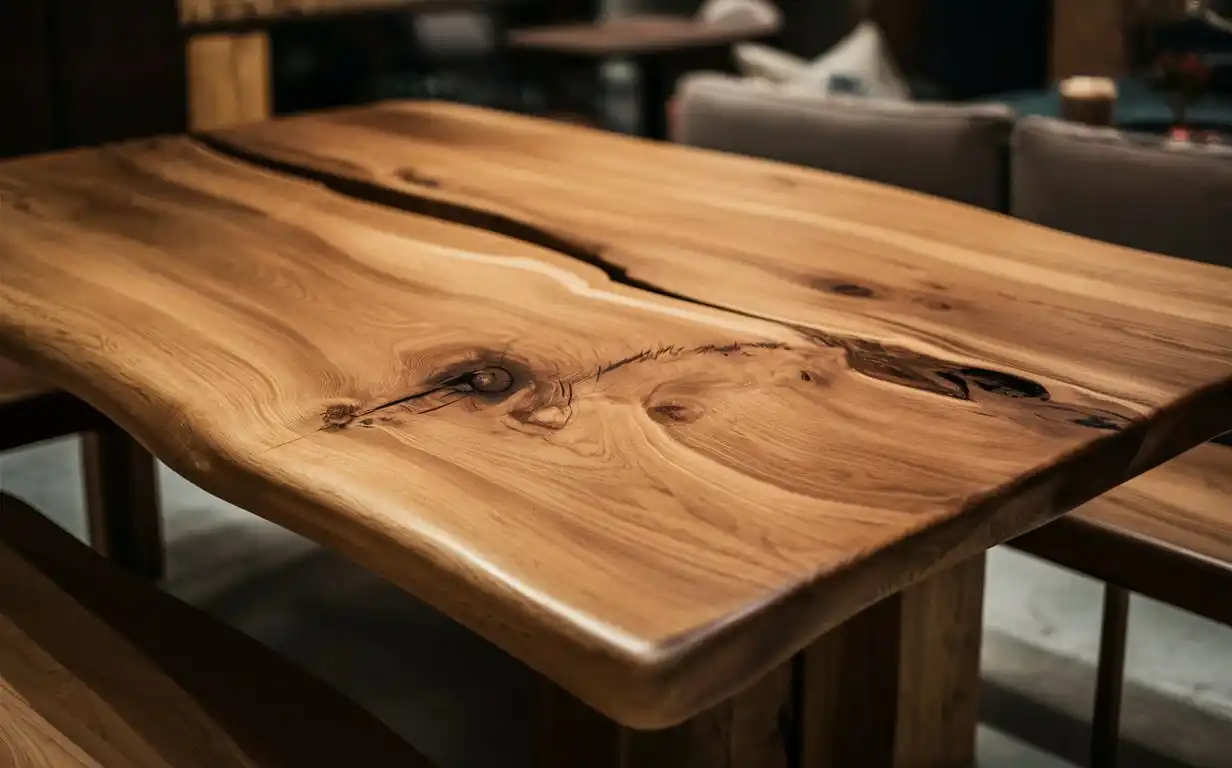
Walnut
Walnut is often considered a premium wood choice due to its rich, dark color and smooth, fine grain. It’s one of the best wood options for table tops where a luxurious, sophisticated look is desired. Walnut is durable, resistant to warping, and easy to work with, making it a top choice for custom or handcrafted tables. Although slightly softer than oak, walnut’s dense grain ensures it holds up well against daily use. It’s particularly popular for coffee tables, dining tables, and desks that need both elegance and endurance.
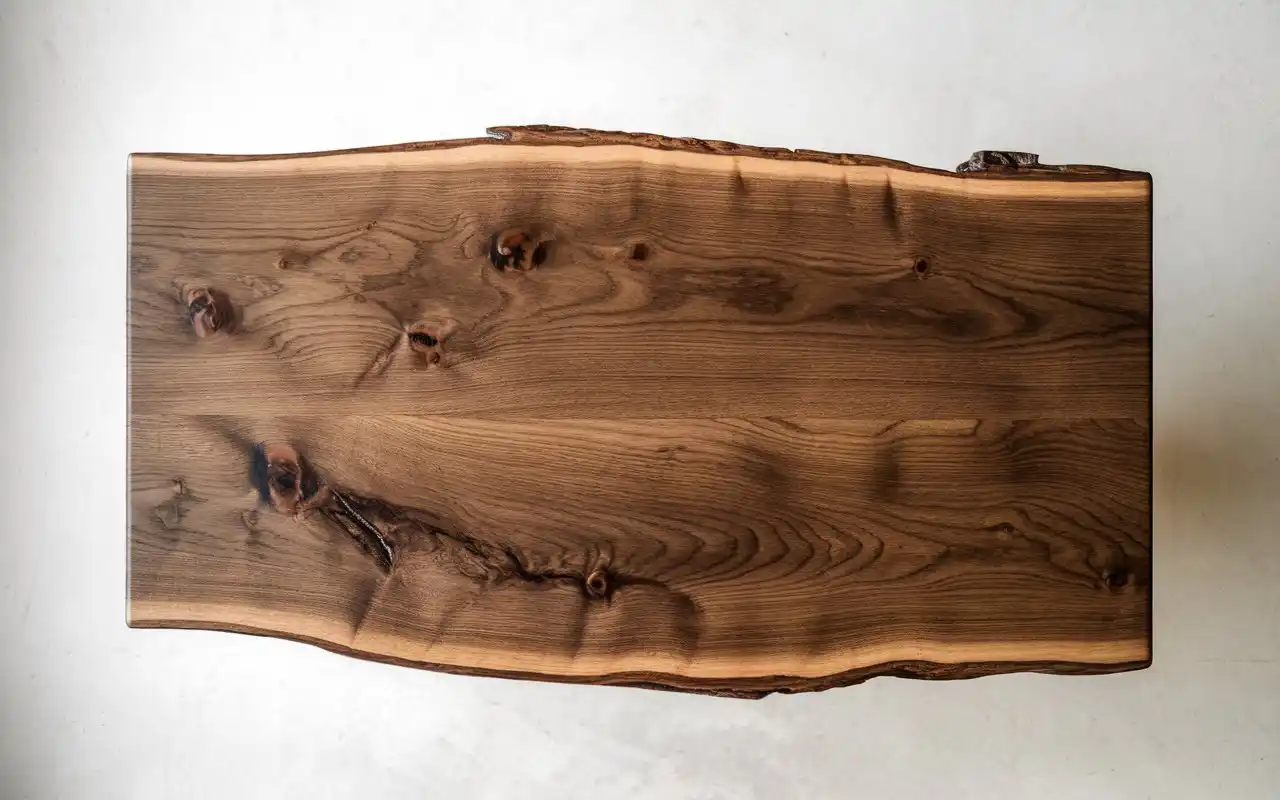
Cherry
Cherry wood is known for its rich, warm hue, which deepens over time as the wood ages. This unique characteristic makes cherry a standout for tabletops, especially in formal dining rooms or spaces where you want to showcase the natural beauty of the wood. Cherry has a smooth texture and a subtle grain, adding a touch of elegance to any room. Its ability to darken with age, developing a rich patina, ensures that it only gets more beautiful with time. If you’re seeking a classic and elegant option, cherry is one of the best woods for table tops.
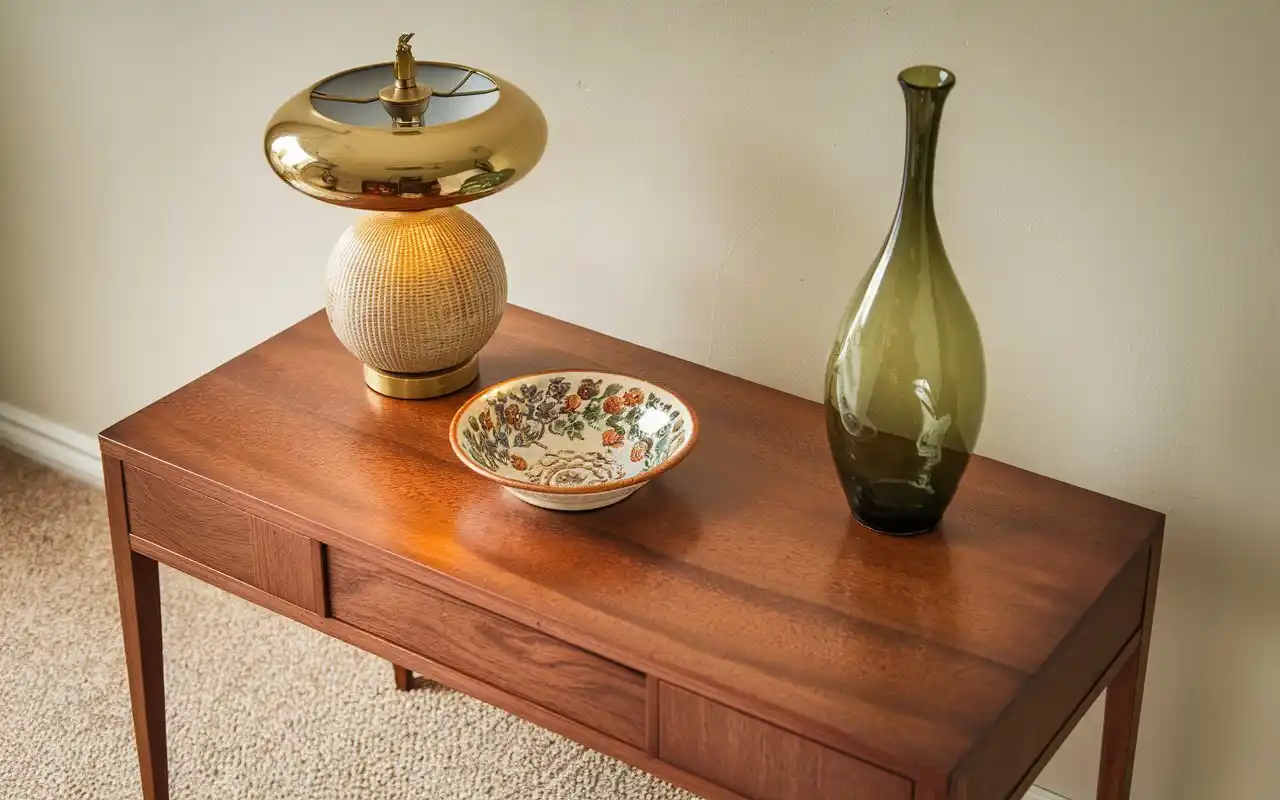
Maple
Maple is a highly durable hardwood with a light color and subtle grain, making it a versatile choice for modern or minimalist spaces. Its natural strength and resistance to scratches make it one of the best woods for table tops in high-traffic areas like kitchens and dining rooms. Maple’s uniform grain makes it ideal for staining, as it can take on a variety of colors to match any décor. Its durability means it will withstand daily wear, making it a great option for families or households with frequent use.
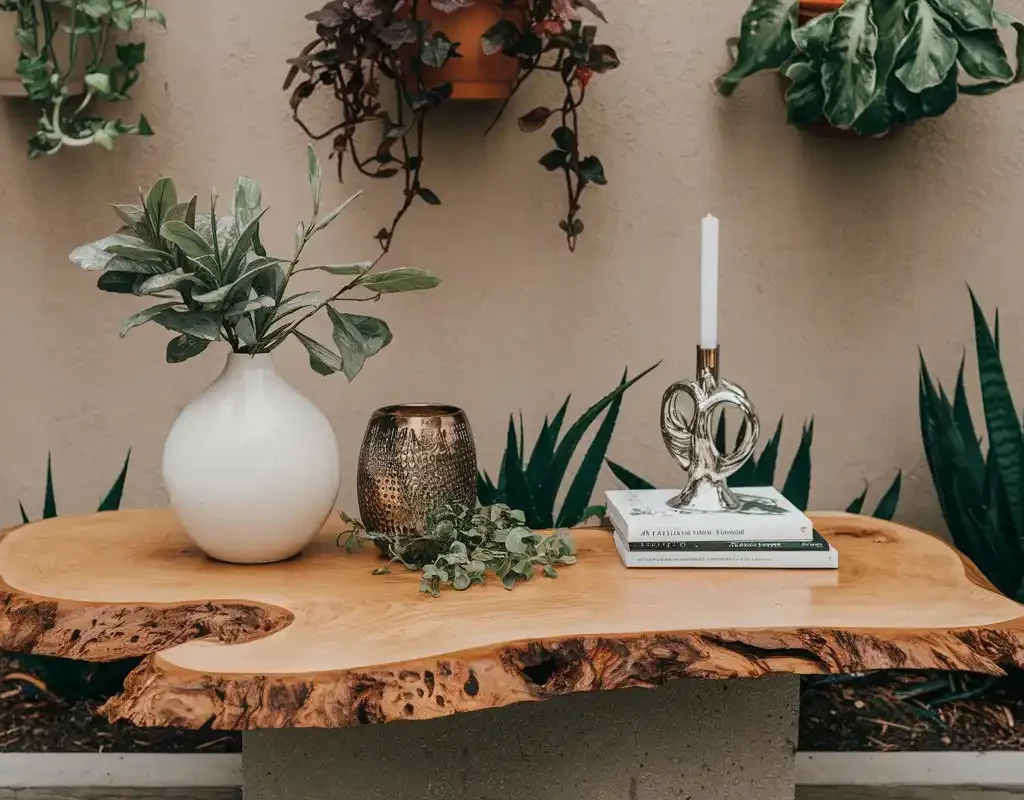
Mahogany
For those looking for a touch of luxury, mahogany is a standout choice for table tops. Known for its deep reddish-brown hue and fine, even grain, mahogany exudes elegance and sophistication. It’s highly durable and resistant to warping, making it an excellent choice for formal dining tables or desks. Mahogany’s ability to be polished to a high gloss enhances its beauty, and its natural resistance to rot makes it a durable, long-lasting option. If you’re looking to create a statement piece, mahogany is among the best wood options for table tops.
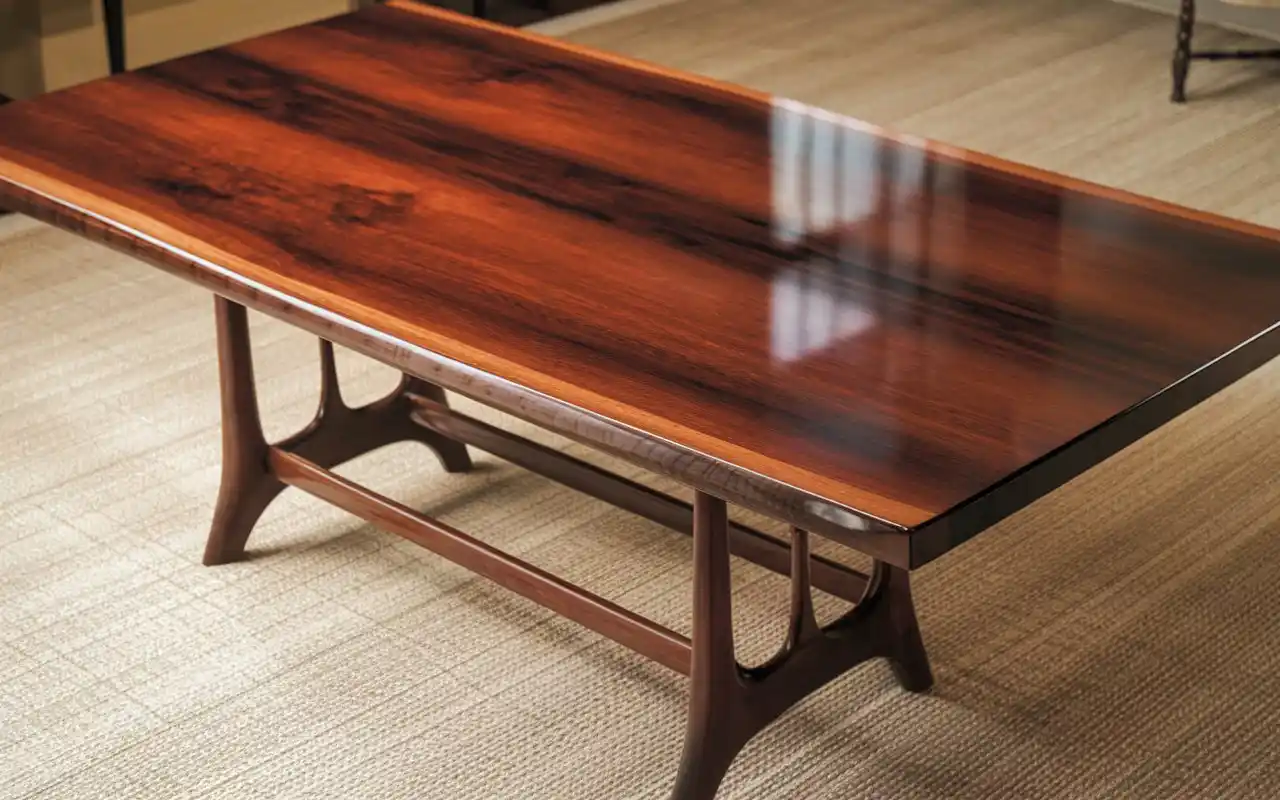
Reclaimed Wood
Reclaimed wood is an eco-friendly option that adds character and history to your table top. Sourced from old barns, factories, and other structures, reclaimed wood offers a unique patina that can’t be replicated with new timber. It’s an excellent choice for those seeking a rustic, industrial, or vintage aesthetic. Using reclaimed wood for a table top is not only environmentally conscious but also provides a one-of-a-kind piece, as no two planks are the same. It’s one of the best wood options for table tops if sustainability and originality are top priorities.
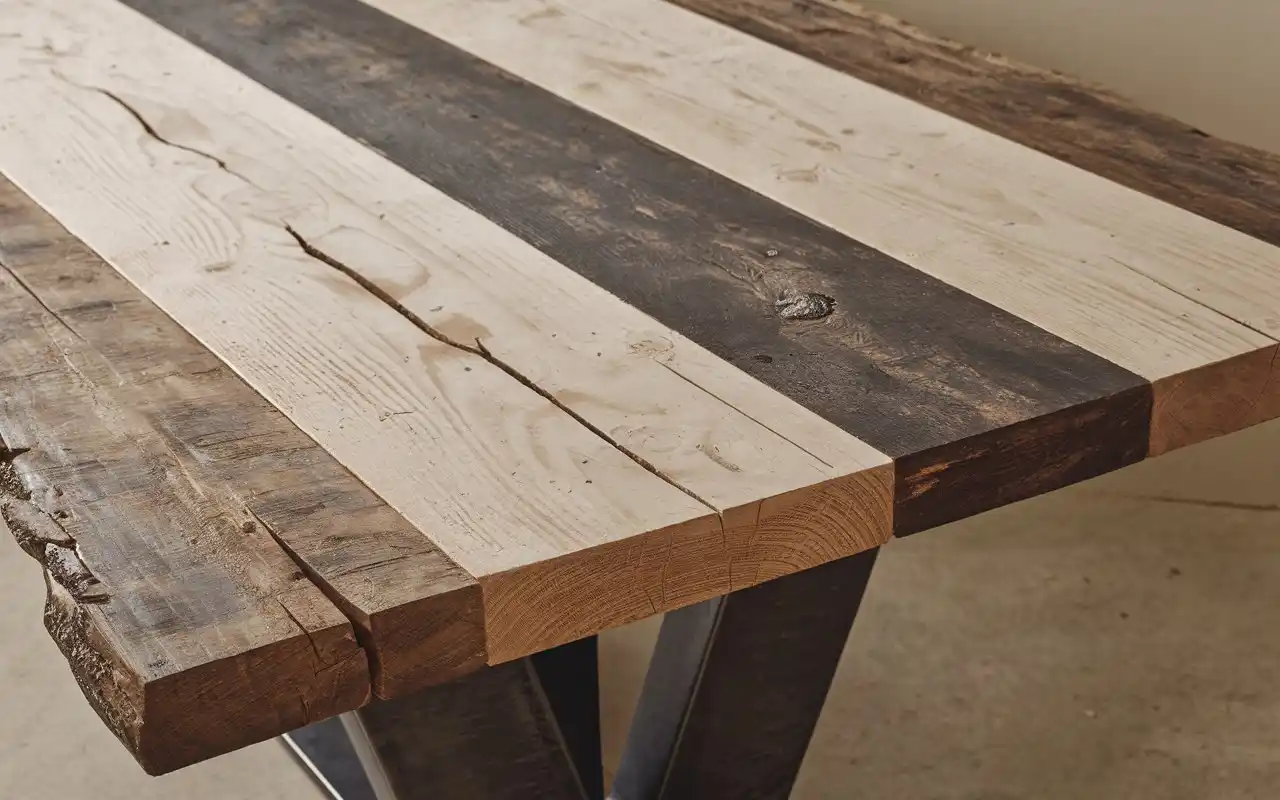
Customizing Your Table Top
Once you’ve chosen the best wood for your table top, customization comes into play. Selecting the right stain and finish can dramatically change the look of your table. Dark stains can make light woods like maple appear more formal, while clear or natural finishes can highlight the grain of rich woods like walnut or oak. Additionally, choosing between matte, satin, or glossy finishes impacts the table’s overall feel. A matte finish gives a natural look, while a glossy finish enhances the wood’s depth and sheen. Customization allows you to tailor the table to your home’s style and your personal preferences.
Durability Considerations
Durability is one of the most critical factors when selecting the best wood for table top use. Different woods require different levels of maintenance to stay in top shape. Hardwoods like oak and walnut are naturally more resistant to scratches and dents, but they still benefit from protective measures like coasters and placemats. Softwoods, on the other hand, are more susceptible to damage and may require more frequent refinishing to maintain their look. Regular care, including cleaning with a damp cloth and occasional polishing, ensures that your wooden table stays looking its best for years to come.
Environmental Impact of Wood Choices
When selecting the best wood for table top, it’s essential to consider the environmental impact of your choice. Certain woods, such as teak and mahogany, are often sourced from tropical regions where deforestation can be a concern. Choosing sustainably harvested or FSC-certified (Forest Stewardship Council) wood ensures that your table top is made from responsibly managed forests. Reclaimed wood is another environmentally friendly option, as it recycles existing materials rather than contributing to deforestation. By making conscious choices, you can enjoy a beautiful table while minimizing your environmental footprint.
Best Finishes for Wooden Table Tops
After selecting the best wood for table top, the finish you choose will play a significant role in its appearance and longevity. There are several types of finishes to consider:
- Oil Finishes: These penetrate the wood, enhancing its natural grain and giving it a rich, warm look. They also provide a certain level of protection against moisture.
- Lacquer: This provides a hard, protective coating and comes in various sheens from matte to high gloss.
- Polyurethane: A popular choice for durability, polyurethane finishes create a thick, water-resistant layer that’s ideal for high-traffic areas like dining tables.
Choosing the right finish not only enhances the beauty of the wood but also protects it from daily wear and tear.
Cost Considerations
The cost of your table top can vary widely depending on the best wood for table top that you select. Hardwoods like walnut and oak tend to be more expensive due to their durability and premium appearance, while softwoods like pine are typically more affordable. Reclaimed wood can also vary in price depending on its rarity and condition. Additionally, customization, such as special finishes or intricate designs, can increase the overall cost. When budgeting for your table, it’s important to consider not only the initial cost of the wood but also the long-term maintenance and durability.
Maintenance and Care Tips
Maintaining your wooden table top is crucial for ensuring its longevity. Regular care helps to preserve its appearance and durability. Here are some essential tips:
- Dust Regularly: Use a soft cloth to dust your table top regularly to prevent dirt buildup.
- Avoid Moisture: Water can cause warping or staining. Always use coasters and avoid placing hot or cold items directly on the wood.
- Polish Periodically: Depending on the finish, using a polish or wood conditioner can keep the surface shiny and protect it from scratches.
- Refinish When Necessary: Over time, your table top might require refinishing, especially if it starts showing signs of wear like scratches or fading.
By following these care tips, you can keep your table looking beautiful for years to come.
Matching Wood to Your Home’s Style
The best wood for table top should complement the style of your home. For a modern, minimalist aesthetic, woods like maple or walnut offer sleek, clean lines and subtle grain patterns. Rustic or farmhouse-style interiors often feature reclaimed wood or oak, which bring warmth and character. Cherry and mahogany are ideal for traditional homes, adding elegance and a rich, luxurious feel. When selecting your wood, think about the overall style of your space and how the color, grain, and finish will enhance it.
Choosing the Right Wood for Different Table Types
The best wood for table top varies depending on the type of table you’re making:
- Dining Tables: For high-traffic areas like dining rooms, durability is key. Woods like oak and walnut are excellent choices because they can withstand daily use.
- Coffee Tables: If your coffee table is more decorative, softer woods like pine or cedar can work well. However, if you frequently use it for placing items like drinks or books, a hardwood like maple might be a better option.
- Desks: For desks, look for sturdy woods like cherry or walnut that can handle the weight of a computer or books without sagging.
Choosing the right wood for each table type ensures you get the durability and aesthetics needed for its intended use.
Conclusion
Selecting the best wood for table top is a balance of aesthetics, durability, and environmental consciousness. From the timeless appeal of oak and walnut to the eco-friendly charm of reclaimed wood, there’s a wood type to match every style and need. By considering factors like hardness, grain, and finish, you can create a table that not only serves a functional purpose but also enhances the beauty of your space for years to come. Whether you’re crafting a dining table or a coffee table, the right wood will ensure your table is a statement piece that stands the test of time.

